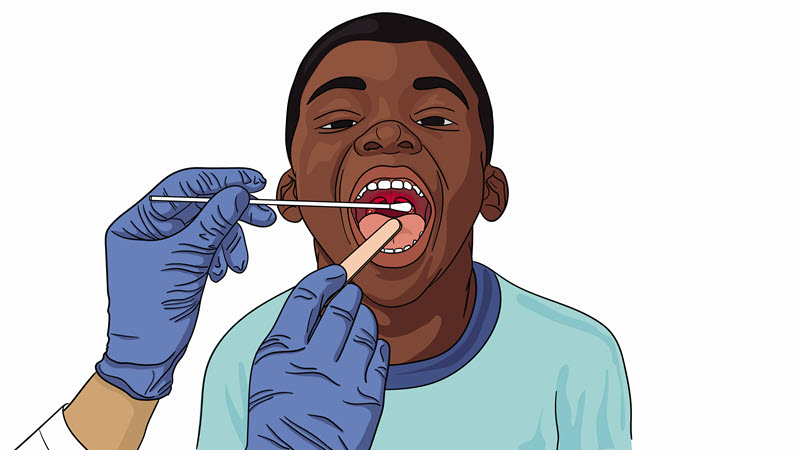Key points
- Healthcare providers can do a quick test to see if someone has strep throat or scarlet fever.
- Talk to your healthcare provider if you or your child have a sore throat, rash, or any concerning symptoms.
- If you test positive, take antibiotics exactly as prescribed.

Why get tested
Testing for group A strep bacteria helps healthcare providers diagnose and treat the illness.
Strep throat and scarlet fever are treated with antibiotics to
- Decrease how long someone is sick
- Decrease symptoms
- Prevent the bacteria from spreading to others
- Prevent serious complications like rheumatic fever
When to get tested
Talk to your healthcare provider if you or your child have a sore throat, rash, or any concerning symptoms.
Types of tests
With a sore throat or rash, healthcare providers generally ask about symptoms and do a physical exam.
They may need to test for strep throat or scarlet fever. There are two types of tests: a rapid strep test and throat culture.
How testing works

If healthcare providers suspect strep throat or scarlet fever, they will test for group A strep. Generally, healthcare providers will do a rapid strep test first, then decide if a throat culture is needed.
Rapid strep test
A rapid strep test involves swabbing the throat and running a test on the swab. The test quickly shows if group A strep bacteria are likely causing the illness.
Throat culture
A throat culture takes time to see if group A strep bacteria grow from the swab. While it takes more time, a throat culture sometimes finds infections that the rapid strep test misses.
Testing results
Positive test (rapid or culture)
A positive result means group A strep bacteria are likely causing the sore throat or rash. The healthcare provider will usually prescribe antibiotics.
Negative rapid strep test
The healthcare provider may want to take a throat culture swab.
For children and teens
Culture is important after a negative rapid strep test.
For adults
It's usually not necessary to do a throat culture following a negative rapid strep test.
Negative culture test
Antibiotics aren't needed since group A strep bacteria aren't causing the sore throat or rash.
What to do if you've tested positive
Healthcare providers treat strep throat and scarlet fever with antibiotics.
Call a healthcare provider if you or your child aren't feeling better after taking antibiotics for 48 hours.
Strep carriers
A carrier is someone who tests positive but has no symptoms. Generally, carriers don't need antibiotics. They're less likely to spread the bacteria to others and very unlikely to get complications.
If a carrier gets a viral sore throat (with or without a rash), a strep test can be positive. In these cases, it's hard to know what's causing the sore throat.
Talk to a healthcare provider if you think you or your child may be a strep carrier.
